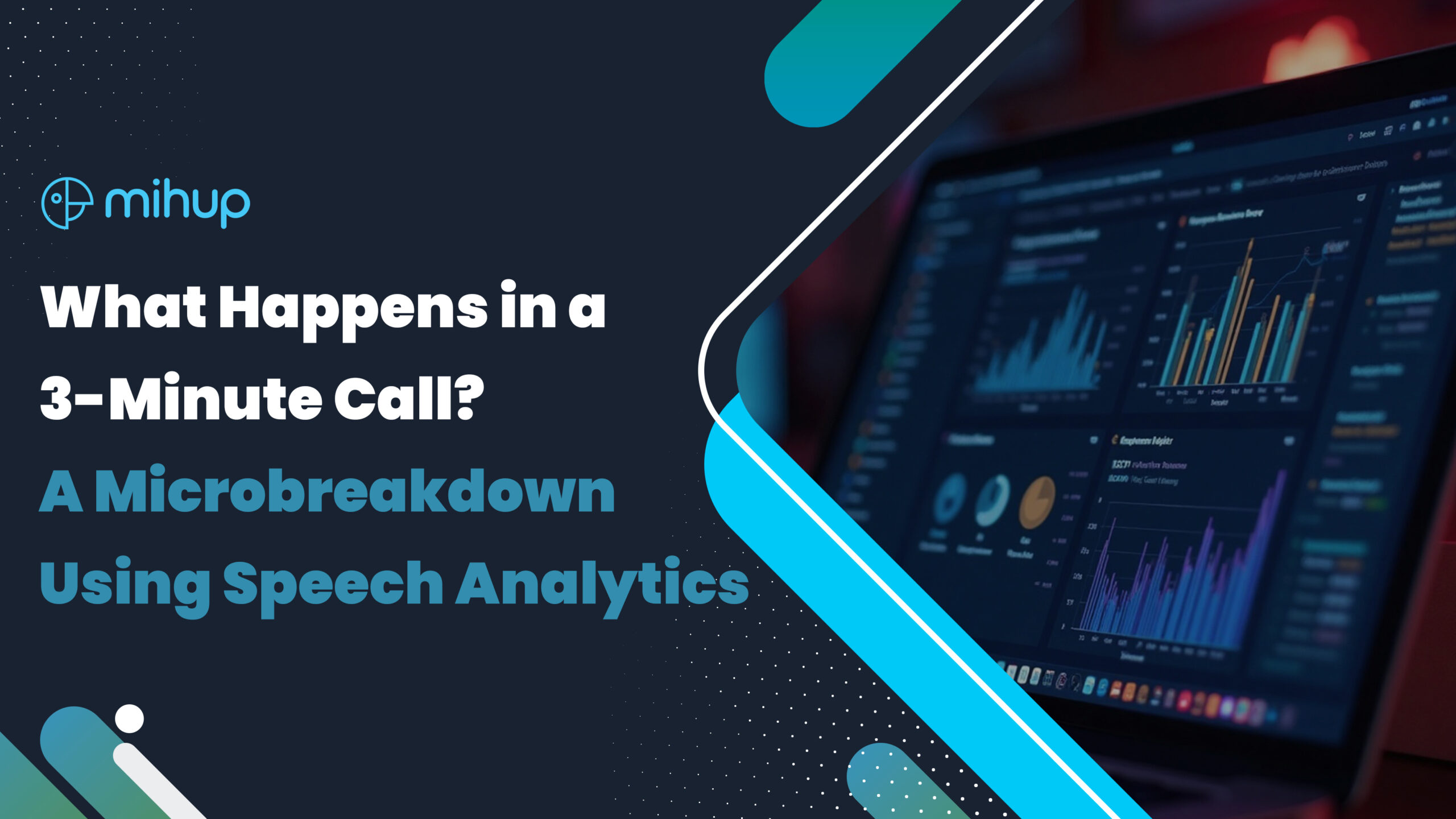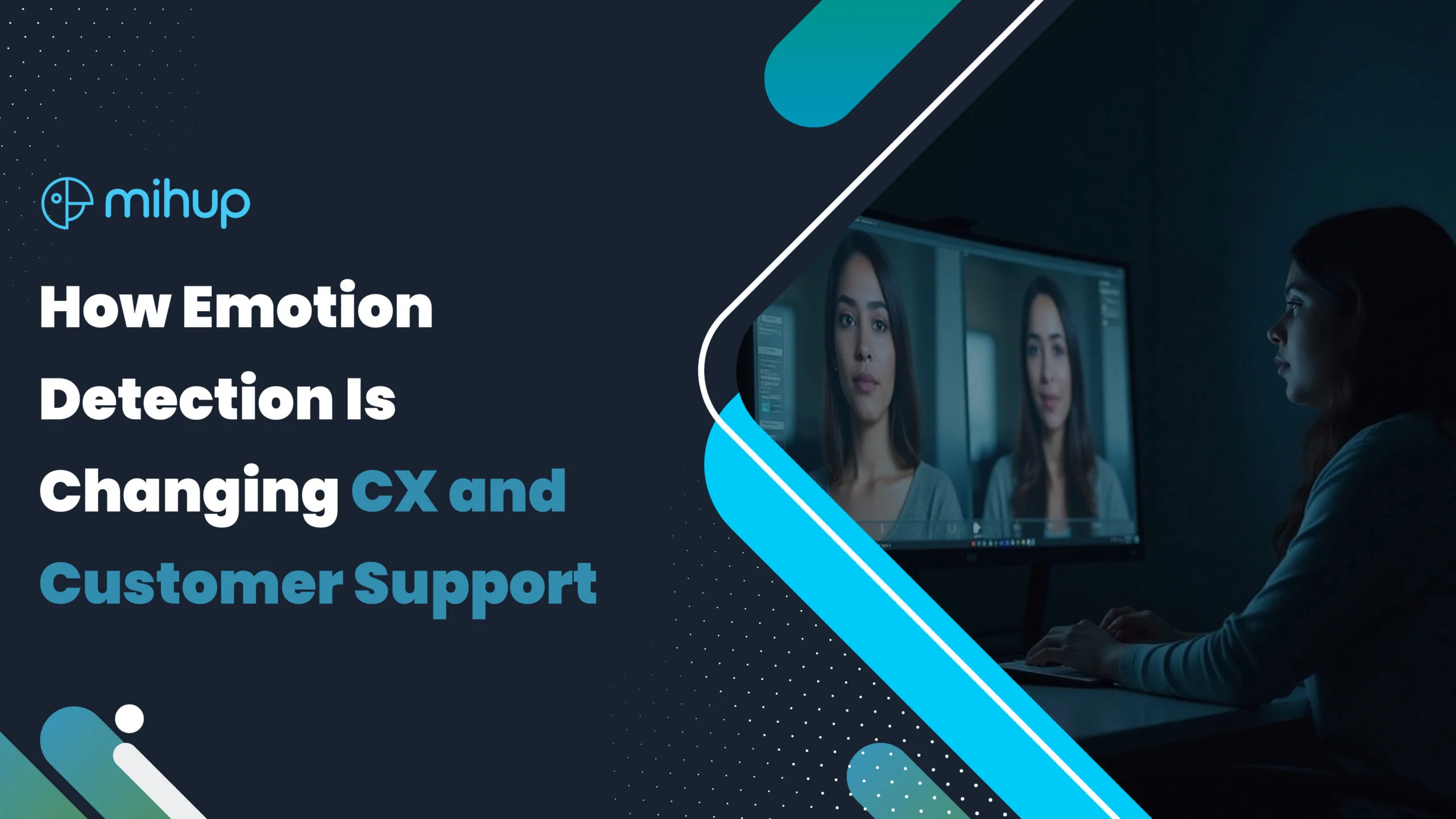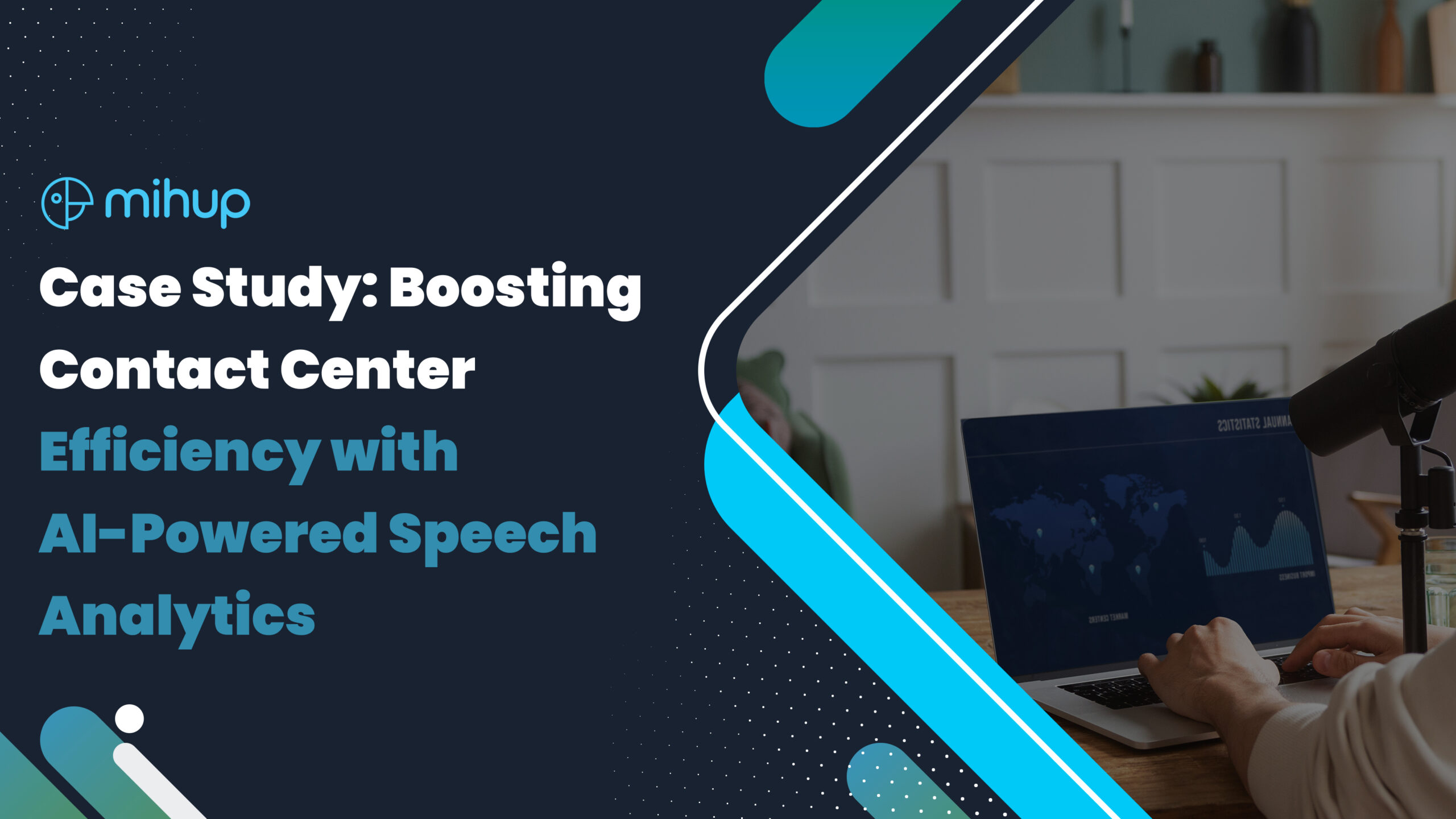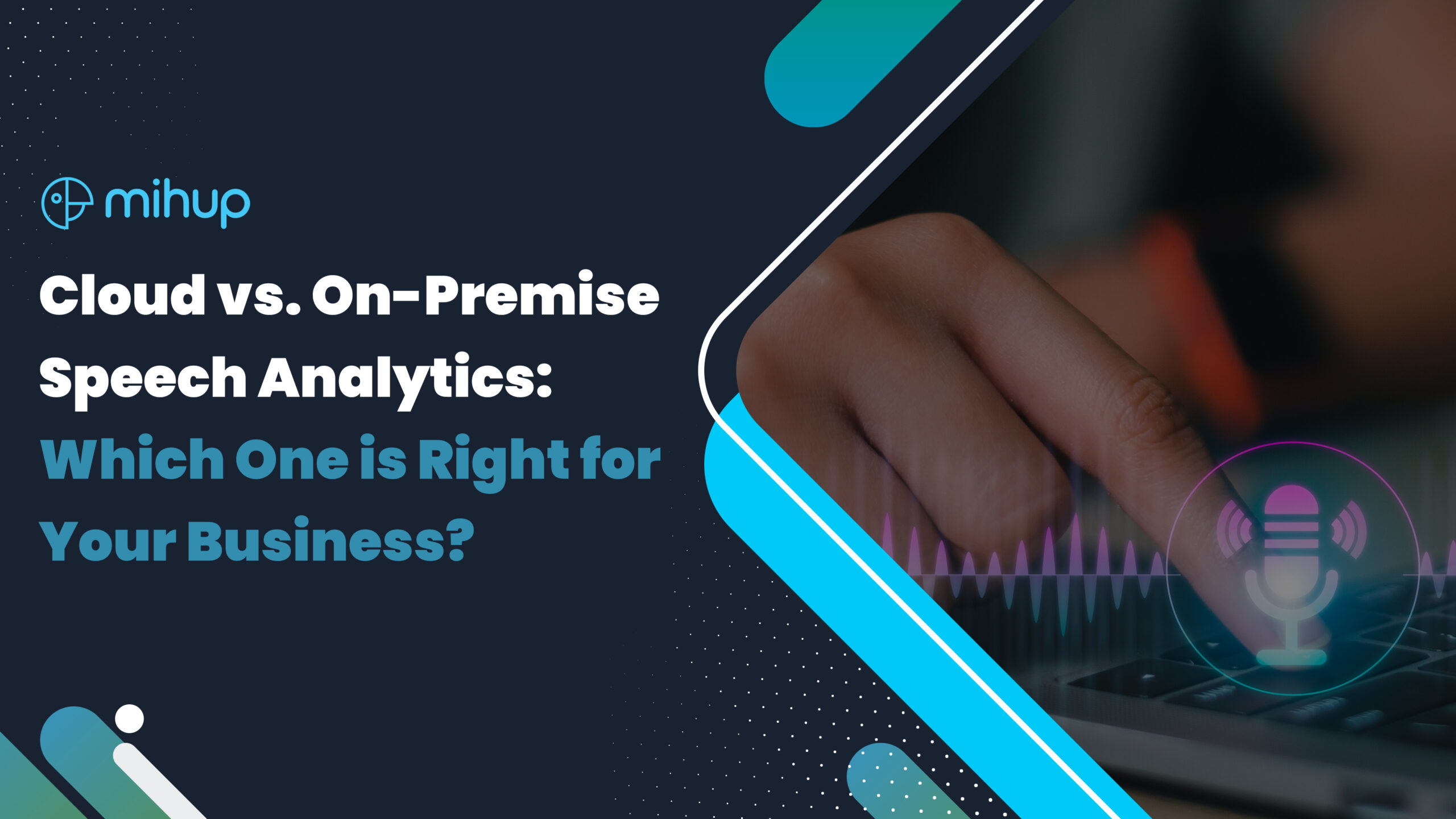Let’s be honest, three minutes on the phone doesn’t sound like much. It’s barely enough time to brew a coffee, respond to a Slack message, or scroll through your feed. But in a call center, three minutes can be everything. A complaint was raised. A problem solved. A customer saved or lost. But here’s the surprising part: the average customer service call lasts just 3–4 minutes. That tiny window holds the power to make or break a customer relationship.
So what really happens in those 180 seconds? With the help of speech analytics, we’re breaking down a single call, second by second, to uncover the emotions, patterns, and turning points that shape the customer experience. It’s like zooming in with a microscope to see the stories hidden in the everyday.
Why Focus on Just 3 Minutes?
You’re going to be surprised by the number of things that can go down in just a couple of minutes. In most customer service calls, the conversation is short, to the point, and easy to understand. Usually, a customer initiates contact, an agent responds, and a resolution (hopefully) occurs.
Imagine this happening every day with hundreds or 1000 calls, and you get a rich resource of information and insights. However, the problem is that listening to all those calls manually is impossible. This is the task that speech analytics takes over the baton — it uses AI to scan, remember, and give you data that you would never find out on your own.
Inside the Call: Key Moments Speech Analytics Captures
Let’s say a customer calls in about a delayed delivery. It’s the second time this week. They’re a little annoyed — not yelling, but you can hear the tension. The agent picks up, introduces themselves, and says, “Let me look into that for you.”
In the background, speech analytics is doing a few things at once:
- It’s picking up on the customer’s tone — slightly impatient.
- It’s listening for keywords like “again” or “frustrated.”
- It’s checking if the agent followed the right greeting script.
- It’s monitoring the flow — is there too much silence, talking over each other, or smooth back-and-forth?
All of this is fed into a call quality score, giving supervisors a quick but comprehensive read on how things went.
A Closer Look: Microbreaking Down the 3-Minute Call
So what actually happens minute-by-minute in a typical 3-minute call? When you break it down using speech analytics, you start to see how different segments directly affect CX metrics like Average Handle Time (AHT) and First Call Resolution (FCR).
1. Introduction Segment (0:00 – 1:00): Setting the Right Tone for Customer Satisfaction and Compliance Risk Mitigation
- The first impression matters. A confident, friendly greeting instantly influences CSAT by 17% and sets up the agent for a smoother conversation.
- Proper customer verification ensures security and builds trust. Speech analytics tools can check for script adherence and emotional tone right from the opening line.
- Get this part right, and you’re more likely to solve the issue on the first call.
2. Query Handling Segment (1:00 – 2:30): Maximizing Value Through Upselling Opportunities and Real-Time AI Feedback
- Here’s where agents do the heavy lifting — solving problems, answering questions, and yes, sometimes unlocking new value through upselling or cross-selling.
- Real-time AI feedback can coach agents during the call: what to say, when to slow down, when to empathize. This helps reduce AHT by 30% while boosting service quality.
- Real-time AI nudges can reduce resolution times by 15–20%, helping agents adjust tone, pace, or script live.
3. Closure Segment (2:30 – 3:00): Reinforcing Positive Experiences with Effective Call Closures
- Ending the call well is just as important as starting it right. A warm thank-you, a clear summary, and defined next steps leave customers feeling reassured.
- These final 30 seconds often determine whether the call counts as a First Call Resolution, or if they’ll be calling back tomorrow.
The beauty of this breakdown? You can scale these insights across thousands of calls to coach better, sell smarter, and serve faster.
The Power of Real-Time Nudges
Let’s say the system notices the customer getting increasingly irritated. Maybe their voice gets louder, or they say something like, “This always happens.” Immediately, a notification pops up for the agent:
- “Customer may be frustrated — try acknowledging their concern.”
This real-time feedback helps agents adjust on the fly, with a little help from AI. It’s like having a coach sitting next to them, whispering gentle reminders in their ear without the pressure of someone actually hovering. These nudges might suggest using the customer’s name, slowing down their speech, or offering a personalized solution — all at the moment, when it counts most.
Post-Call Analytics: Extracting Scalable Customer Insights
Now zoom out. Imagine looking at thousands of these short calls over the past month. What patterns start to emerge?
- Maybe customers keep calling on Mondays about late deliveries.
- Maybe there’s a spike in calls after app updates.
- Maybe customers in one region sound more frustrated than others.
This is where speech analytics becomes a listening tool at scale — not just for what’s being said, but how it’s being said, and why. The more conversations you analyze, the clearer the picture of your customers becomes.
How Automation Enhances Agent Productivity and CX
Let’s talk about something every support team struggles with: time. Agents are expected to juggle calls, document everything, and move on to the next one without missing a beat. It’s exhausting — and inefficient.
Speech analytics takes a load off by automating repetitive tasks:
- It transcribes calls.
- It tags sentiment.
- It even writes call summaries and next steps.
This alone can reduce manual QA time by up to 60%, freeing up teams to focus on high-value coaching. Instead of spending precious minutes typing notes, agents can focus on the human side of the call. And for managers? Less time listening to calls, more time coaching where it counts.
Example: Let’s zoom in on that omnichannel beauty platform. They’re huge, millions of users, endless brands—but growth brought pain: low CSAT, sluggish QA, and escalations galore. Manual audits of 3-5% of calls left them guessing, and customers were slipping away.
Mihup’s Interaction Analytics changed everything. We analyzed 100% of their calls and found: agents missing upsells, long AHT fueling frustration, and escalations tanking their rep. With our tools, they:
- Boosted CSAT by 75% with happier, faster service.
- Lifted agent scores 13% through targeted coaching.
- Cut QA effort by 20% with automation.
The result? A contact center that’s not just surviving—it’s driving growth and loyalty.
Spotting Friction Before It Becomes a Fire
Sometimes it’s not what customers say — it’s when they pause, repeat themselves, or go quiet. These are subtle signals of frustration, and speech analytics helps you catch them. By mapping each step of a typical call, you can identify moments where things tend to go off track. Maybe:
- Customers get stuck verifying their accounts.
- They’re transferred too quickly.
- The agent’s explanation is unclear.
These aren’t just annoyances. Left unresolved, they become reasons customers leave.
But if you spot these issues early, you can fix them, smoothing out bumps in the journey and making the experience feel effortless.
Coaching That Hits the Mark
Let’s face it — vague feedback doesn’t help anyone. Telling an agent to “sound more empathetic” is like telling a chef to “cook better.” What makes speech analytics so valuable is the specificity it offers. You can see exactly where an agent:
- Missed a moment to reassure a customer
- Used unclear language
- Didn’t follow up after a commitment
This means coaching becomes more focused, personalized, and productive. Over time, your team isn’t just getting through calls — they’re getting better at them.
The Bigger Picture: One Conversation Across Many Channels
Most customers don’t just call. They might send an email, drop a message on social media, or use the chat on your website. Often, it’s about the same issue, just different channels.
By integrating speech analytics with other platforms — your CRM, helpdesk, and social tools — you get the full story of that customer’s experience. Now, when someone calls, the agent already knows:
- They emailed two days ago.
- Their last delivery was delayed.
- They’ve had this issue before.
That’s not just efficient — it’s personal. And customers feel it.
Does All This Really Move the Needle? Absolutely.
Companies using speech analytics consistently report big wins:
- Shorter call durations
- Fewer repeat calls
- Higher CSAT scores
- More confident agents
- Less time spent on QA
And perhaps most importantly, a clearer, more honest understanding of what customers are really saying. This isn’t just about saving time or checking boxes. It’s about building trust, loyalty, and better experiences at scale.
So, What Really Happens in a 3-Minute Call?
More than what one could expect. A three-minute call is like a short story. It has a start, a middle, and an end. Especially, it not only contains emotion, data, and context but also opportunities. With the appropriate tools, a deeper dive into the call reveals the reasons behind customer loyalty or frustration. Every conversation, regardless of whether it’s a complaint, a compliment, or just a quick question, is significant.
Has breaking down the conversation to its parts raised your interest in what is going on in your calls? It would be our pleasure to assist you in that task. Let’s spend some time together analyzing several conversations, showing you the patterns, and discovering the bright and the dark sides. Believe it or not, it’s something you can take action on, really useful, and getting to know the common factors for a happy experience…cool. Arrange a meeting with our expert or choose the free demo, and then we will carefully examine your calls.





